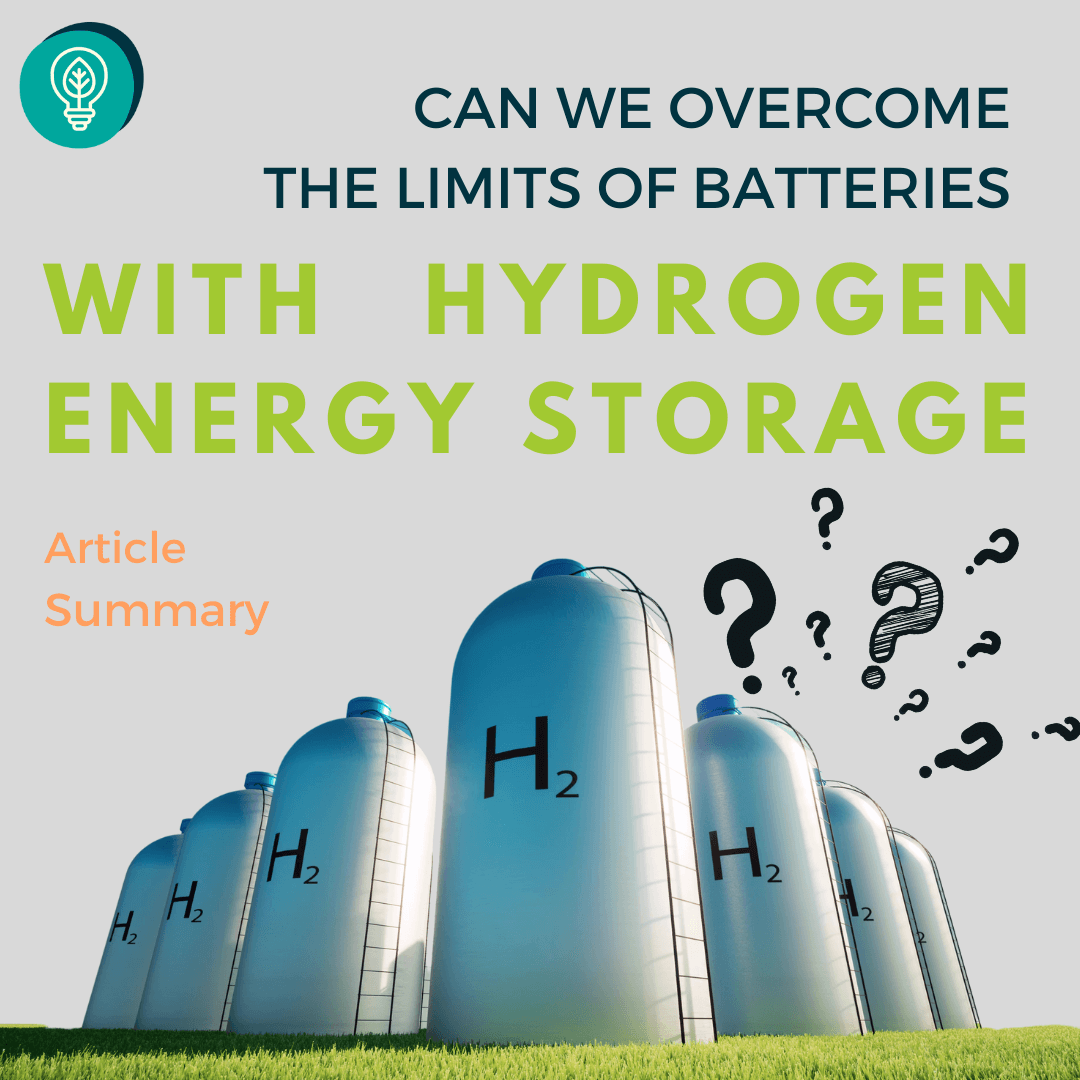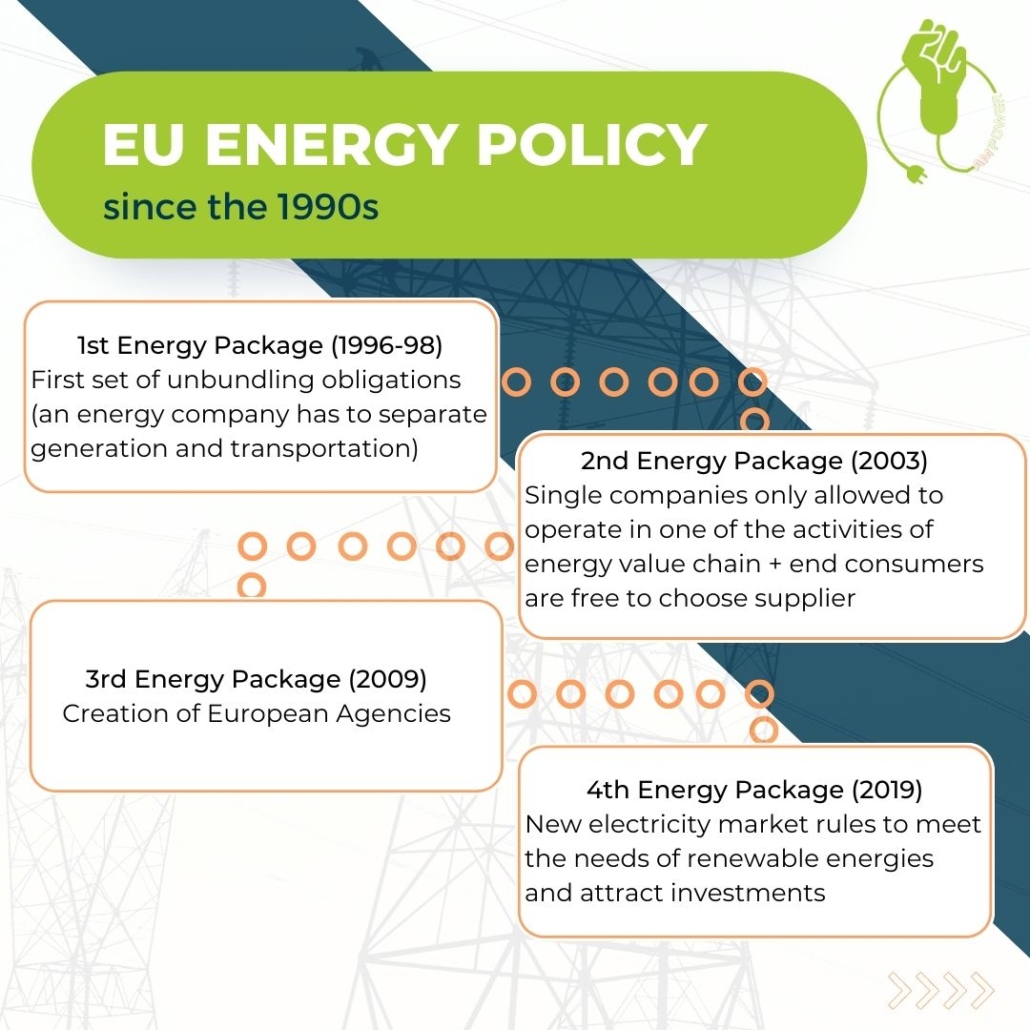The war in Ukraine has highlighted the significance of energy policy as a major power issue. It is an opportunity to break
Liberalisation of the energy sector | Webinar Recap
Overview of the EU’s legislative system and the energy sector liberalisation

Liberalisation of the energy sector
The liberalisation of the European energy sector was the continuation of the European Union’s effort to create a European single market.
The underlying idea is that the creation of an economic union would naturally bring European countries closer together leading to further political integration, thus guaranteeing peaceful inter-state relations.
The main purpose of the liberalisation process was to organise the provision of electricity and gas more efficiently by introducing competitive forces where possible and regulation where needed.
Main barrier to the liberalisation of the energy sector
Up until the 90’s the energy sector was structured around national monopolies preventing any kind of competition to emerge.
A major step in this process was thus to break down national monopolies or what is referred to as “unbundling”.
The first “unbundling” obligations appeared with the 1st energy package (1996-98) and required the separation of generation, transmission, distribution, and retail activities.
Secondly, to increase cross-border exchanges the EU massively invested in interconnections. The European interconnected grid is now the largest in the world with 400 interconnectors (cross border pipeline and electric cables) linking 600 million citizens.
What are the results of this process?
Positive aspects
- Opening the energy market to competition allowed new players to emerge.
- It enabled the establishment of a regulatory framework beneficial to renewable energy production.
- The creation of a large interconnected grid also facilitates the development of renewables as it improves the grid stability. Solar and wind being intermittent energy, it is essential to increase ways to maintain the network’s stability (that means to ensure that production always meets the demand and vice versa).
- Competition also drives innovation and energy efficiency (strong incentive for producers to find ways to produce more with less for a higher margin).
- Renewable energy production costs are constantly getting lower.
Negative aspects
- The price for end-consumers remained unaffected, and the promise of cheaper electricity and gas for the citizen wasn’t delivered.
- The low wholesale market price affects the capacity of large industries to remain profitable.
- The current market design forces the electricity price to be indexed on the most expensive commodity. With the war in Ukraine, gas prices went through the roof, driving electricity prices up (despite low generation costs of renewable and nuclear).
- With the entire energy chain in the hands of private actors, profit becomes the number one priority, ahead of the security of supply. This can cause issues of under-investment in critical infrastructures.
What are Energy Communities (or energy cooperative)?
Legal entities of citizens getting together around an energy transition project.
They run around 7 main principles :
- Voluntary and open membership
- Democratic member control
- Member economic participation
- Autonomy and independence
- Education, training and information
- Cooperation among cooperatives
- Concern for Community
Why are they so relevant to the energy transition?
It is estimated that half of the European citizens could produce their own electricity, covering about 45 % of the overall electricity demand.
89 % of the population could get involved in some energy system activity (for instance with the spreading of electric cars, households could offer energy storage services. Modern appliances like smart metres, remote control thermostats, electric vehicles etc. can offer demand response services*)
Energy cooperatives can get involved in a wide range of activities such as
Production • Supply • Distribution • Flexibility •Storage • Demand response •Energy monitoring •District heating • Transportation – E-car sharing • Energy savings – Collective home retrofits
*demand response: increased flexibility from the demand side to adapt consumption to the available generation.
On top of the technical advantages that the multiplication of energy communities could bring, these structures also fulfil a major social element of the green transition: Citizen engagement. The green transition is not only about switching from dirty to clean energy sources it is rethinking our entire economy and our consumption pattern. By giving the opportunity to our citizens to get directly involved in the energy chain, we create a population more aware of its own consumption and conscient of the behavioral changes needed to achieve our ambitious climate targets.
Major barriers to the creation of energy communities:
- • Access to funding
- • Lack of upfront investments and specific skills: Volunteer-based & lack financial skills. More risk aversion.
- • Lack of knowledge from financing institutions: banks don’t recognize the new and innovative business models of energy communities
- • Lack of streamlined/stable Government financing mechanisms: public finance can de-risk and mobilise further community & private capital
Want to learn more?
Watch this video explanation of the virtue of energy communities
More articles
How is our generation responding to the challenges posed by the energy crisis and the imperative for a green transition? This thought-provoking

In this article, we will delve into the exciting world of hydrogen as a potential solution for energy storage, aiming to overcome

Germany is particularly vulnerable to disruptions in the global fossil fuel supply chain. Can coal be considered a temporary solution to the
More To Explore
Our mission
 YEE aims to unite environmental youth non-profit organisations in Europe in order to enhance international cooperation, increase knowledge about the climate crisis, raise awareness of environmental problems and to strengthen participation of youth in environmental decision-making.
YEE aims to unite environmental youth non-profit organisations in Europe in order to enhance international cooperation, increase knowledge about the climate crisis, raise awareness of environmental problems and to strengthen participation of youth in environmental decision-making.
Get in touch
Vinohradská 2165/48
120 00 Praha 2 – Vinohrady
Czech Republic
E-mail: yee@yeenet.eu


Financially supported by the European Youth Foundation of the Council of Europe. The views expressed do not necessarily reflect the official position of the Council of Europe


















